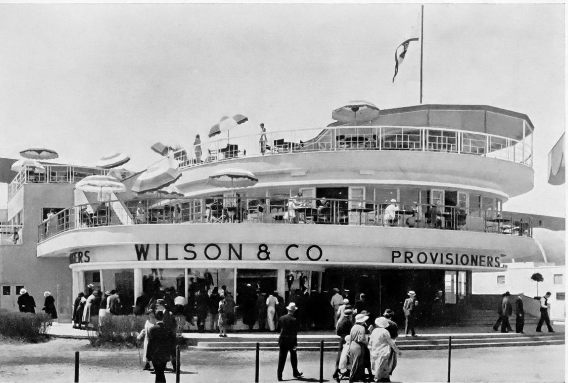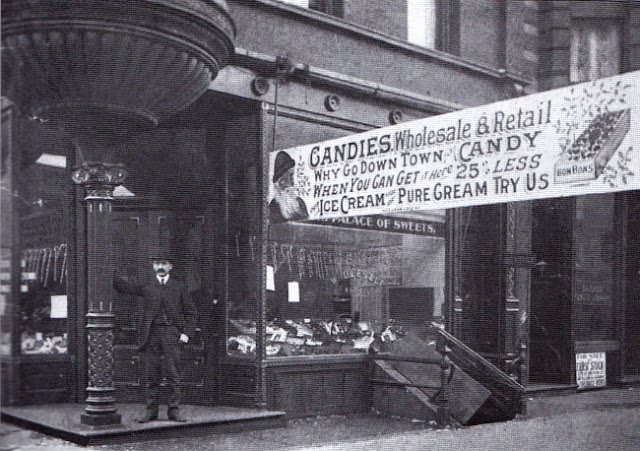The New York Central Railroad built the DeWitt Clinton in 1831, which began the Mohawk & Hudson Railroad (M&H), a New York City predecessor (NYC). They also built this working replica of the DeWitt Clinton for the 1893 World's Columbian Exposition in Chicago.
sidebar
The Tom Thumb Locomotive was the first American-built steam locomotive to operate on a common-carrier railroad. It was designed and constructed by Peter Cooper in 1829 to convince owners of the newly formed Baltimore and Ohio Railroad (B&O; now CSX) to use steam engines; it was not intended to enter revenue service.
In the 1933-34 Century of Progress World's Fair in Chicago, the DeWitt Clinton and Tom Thumb steam locomotives were part of the "Wings of a Century" transportation pageant:
"Just south of Thirty-first Street, on the lakeside, you may watch the dramatization of this century of progress in transportation, the pioneer in the field of communication. On a triple stage, in an outdoor theater, two hundred actors, seventy horses, seven trail wagons, ten trains, and the largest collection of historical vehicles ever to be used, operating under their own power, present "Wings of a Century." Here is the "Baltimore Clipper," the fastest boat of them all. From 1825 to 1850, the "Tom Thumb," the first locomotive of the B&O, the De Witt Clinton, from the old Mohawk & Hudson (New York Central), the Thomas Jefferson (1836) of the Winchester & Potomac (first railroad in Virginia) than the old "Pioneer," the Northern Pacific engine of 1851 a giant locomotive of today (the 1930s) and the 1903 Wright brothers' first airplane.
A one-horse chaise (shay), a light, covered, two-wheeled carriage for two persons.
There is a one horse chaise, like George Washington traveled in, and covered wagons and stage coaches of the California Gold Rush 1848 to 1855 days."
The DeWitt Clinton was the first steam locomotive built for service in New York State, and it made its inaugural run on August 9, 1831, connecting Albany and Schenectady in New York State. It ran on rails made of wood or iron, laid on the ground to create a track.
 |
| This replica was built for the 1893 World's Columbian Exposition. Official Photograph. Note the barrels of water for the engine. |
It was named after DeWitt Clinton, the governor of New York State responsible for the Erie Canal, a competitor to the railroad. DeWitt Clinton's first run was a success, and it helped to pave the way for the development of the railroad industry in the United States.
The DeWitt Clinton was a 0-4-0 steam locomotive.
sidebar
0-4-0 represents one of the simplest possible types, with two axles and four coupled wheels, all of which are driven.
The locomotive was powered by a coal-fired boiler, with a top speed of about 15 miles per hour. The DeWitt Clinton was a small locomotive. It played an essential role in demonstrating the feasibility of steam-powered locomotives in the United States for transportation purposes. It paved the way for the rapid expansion of the railroad industry and the subsequent development of the American transportation system.
Lionel O-Gauge DeWitt Clinton. (0.25" to a Foot) [runtime 12:41]
It was Also Available in HO-Gauge (3.5 mm to a Foot).
It was Also Available in HO-Gauge (3.5 mm to a Foot).
Comparing this train with modern trains, the 15 miles per hour was considered a terrific speed, and the accommodations afforded by the coaches were considered the height of comfort.
ADDITIONAL READING:
Compiled by Dr. Neil Gale, Ph.D.




























